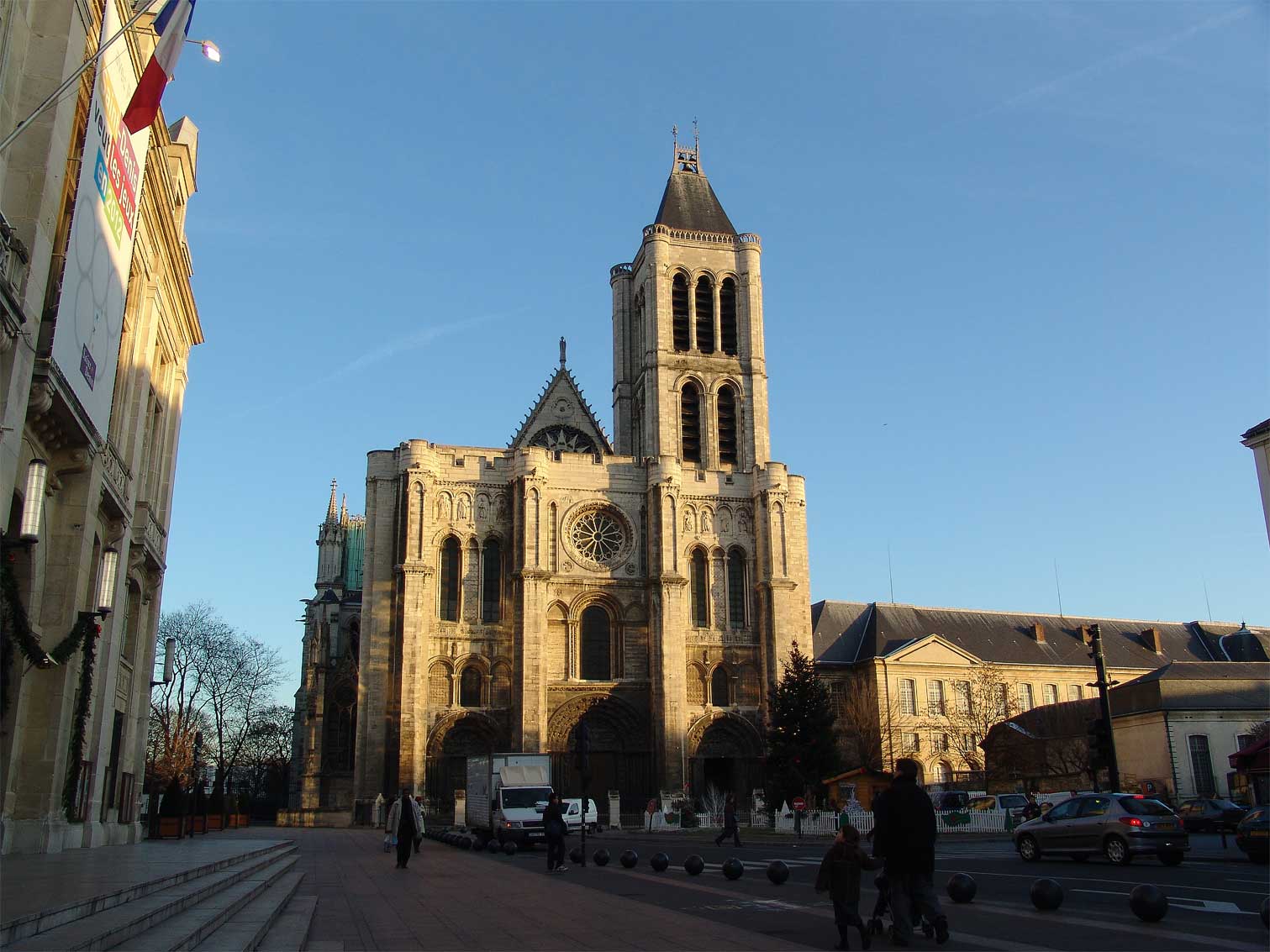 First, it should be noted that, contrary to the description of the father of art history, Vasari, the beginning of Gothic art as an architectural style and worldview has nothing to do with the German tribe of the Goths, but actually got its start in Ille de France, seven kilometers from the center of Paris. The first Gothic construction was the Basilica of St. Dennis, which became the burial place for French kings and the most important spiritual center of France. The birth of Gothic style is connected with the appearance in France of a genius who created French and Western European culture by creating the Gothic style in architecture while he was the head of the Abbey of St. Dennis. His name was Abbot Suger.
First, it should be noted that, contrary to the description of the father of art history, Vasari, the beginning of Gothic art as an architectural style and worldview has nothing to do with the German tribe of the Goths, but actually got its start in Ille de France, seven kilometers from the center of Paris. The first Gothic construction was the Basilica of St. Dennis, which became the burial place for French kings and the most important spiritual center of France. The birth of Gothic style is connected with the appearance in France of a genius who created French and Western European culture by creating the Gothic style in architecture while he was the head of the Abbey of St. Dennis. His name was Abbot Suger. At the beginning of his career as an advisor to French kings, Abbot Suger, due to his personal bravery was able to assemble and head the French national guard when it was necessary to counteract the activities of robberbarons who were ruining peasants, killing priests and robbing churches and cities. After he became the commander of the King’s army, many of these robberbaron noble jerks were killed and their castles were ruined. Most of them ran away from France into the dumpster of the Crusades, and their absence resulted in a substantial period of peace and prosperity for France. In another critical moment of history, when France was threatened with invasion by German armies, Abbot Suger’s call to arms united all of France, and the picture of France standing shoulder to shoulder appeared to be enough to prevent the invasion. Besides that, it was Abbot Suger who designed a new policy of unity between the French monarchy, French cities and the Papacy against the barons. This unity became the foundation of the integration and independence of France that turned it into a superpower and determined the political structure of Europe for the next five centuries.
Before he became the abbot of St. Dennis, Suger was in service in Normandy to the son of William the Conqueror, Henry I (Beauclerc), who was a Norman duke and, from a formal point of view, a vassal of the French monarch. Suger managed to earn his trust on the grounds of his extensive knowledge of arts and sciences and later on that trust contributed to his activities as a diplomat and a peacekeeper , which postponed the 100 years war between France and England for almost a century. Even more than that, his arbitration between the English and French kings almost made the 100 years war a nonstarter. Had it not been for his unexpected death, the divorce of Louis VII from his wife, Eleanor of Aquitaine, whose mind-boggling beauty brought England and France to the edge of an abyss of insanity that lasted for a hundred years, Meanwhile this conflict affects European policy to the present time and has become a permanent factor in Western European history.
Considering the beauty of Eleanor of Aquitaine, combined with the large territory attached to this beauty, it is not surprising that when Louis VII decided to go on crusade, he took his wife with him. Abbot Suger was the only one whom the royal family trusted to guard France while they were on crusade and thus for four years Abbot Suger held the office of regent of France.
In spite of the historic scale of these achievements, the contribution of Abbot Suger to art and architecture may be even more important than his contribution to state building. When he began repairs on the crumbling Abbey of St. Dennis, he became not only the sponsor of the first Gothic temple, but also a great architect and artist responsible for bringing together into a new style the most important Gothic elements, such as rose windows, stained glass and flying buttresses. The latter enabled the architects to offset the forces coming from the roof, thus allowing walls to be less thick and windows bigger, which set the ground for implementing other elements of the Gothic style. Due to these innovations, Abbot Suger was able to create the same impression that had been made previously by the dome of Hagia Sophia: an image of a church with walls made out of shining light that later on became an ideal and dream of the best architects of the high and flamboyant Gothics. By doing this, he continued the tradition of abbot-architects instituted in the West by the chief architect of the Abbey of St. Michel, William of Wolpan. According to this tradition architecture appears to be the realization not only of aesthetical and engineering ideas, but also of theology and philosophy, making a church a symbolic representation of the universe.
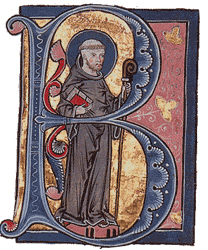 In spite of his meritorious service to the Church and the French monarchy, Abbot Suger was attacked because of his aesthetical innovations implemented during the reconstruction of the Abbey of St. Dennis that took place from 1137 to 1142. This attack came from another giant of that time, St. Bernard of Clairvaux, whose influence on Civilization Christianity cannot be underestimated. He was a man of many contradictions, as his merits were another side of his flaws: he was an ascetic who created a sensuous cult of the Mother of God, a ruthless fighter of heresies and author of the Chapters of the Order of the Temple. He was the instigator of the Second Crusade, famous for the phrase “to kill for Christ is not a crime but a Christian glory,” and a founder of the Cistercian order, famous for its ascetical practices. Bernard of Clairvaux was a leading ideologist of the Cistercian reform of the Catholic Church and it was his inability to pray in the presence of objects of liturgical art that gave this reform its distinctive iconoclastic favor. Meanwhile, the effect of the break-up of the Benedictine monastic order on Cistercians and Benedictines proper is one of the key elements to understanding the history of Western European art. This break-up was caused by the style of St. Bernard, who was trying to impose his aesthetic ideal of a white wall with an iron or wooden cross on it in the form of an ultimatum to the Benedictines, who consistently decorated their churches with objects of liturgical art. No wonder that the aesthetic innovations of Abbot Suger, which went on to become the foundation for the Gothic style, and which later on were condemned by the manifest of the Order of the Cistercians, were the prime target of St. Bernard’s ultimatum: “There shouldn’t be any depictions or sculptures except crucifixes made out of wood.”
In spite of his meritorious service to the Church and the French monarchy, Abbot Suger was attacked because of his aesthetical innovations implemented during the reconstruction of the Abbey of St. Dennis that took place from 1137 to 1142. This attack came from another giant of that time, St. Bernard of Clairvaux, whose influence on Civilization Christianity cannot be underestimated. He was a man of many contradictions, as his merits were another side of his flaws: he was an ascetic who created a sensuous cult of the Mother of God, a ruthless fighter of heresies and author of the Chapters of the Order of the Temple. He was the instigator of the Second Crusade, famous for the phrase “to kill for Christ is not a crime but a Christian glory,” and a founder of the Cistercian order, famous for its ascetical practices. Bernard of Clairvaux was a leading ideologist of the Cistercian reform of the Catholic Church and it was his inability to pray in the presence of objects of liturgical art that gave this reform its distinctive iconoclastic favor. Meanwhile, the effect of the break-up of the Benedictine monastic order on Cistercians and Benedictines proper is one of the key elements to understanding the history of Western European art. This break-up was caused by the style of St. Bernard, who was trying to impose his aesthetic ideal of a white wall with an iron or wooden cross on it in the form of an ultimatum to the Benedictines, who consistently decorated their churches with objects of liturgical art. No wonder that the aesthetic innovations of Abbot Suger, which went on to become the foundation for the Gothic style, and which later on were condemned by the manifest of the Order of the Cistercians, were the prime target of St. Bernard’s ultimatum: “There shouldn’t be any depictions or sculptures except crucifixes made out of wood.”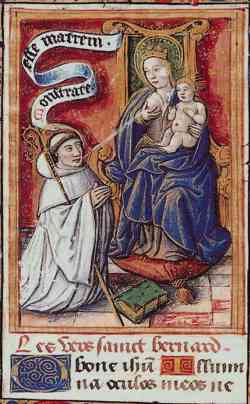 At first St. Bernard attacked Abbot Suger on the grounds of Abbot Suger’s use of precious stones and golden vessels in the liturgy, while giving the monks of St. Dennis under his jurisdiction a great deal of independence. Abbot Suger, who was a great diplomat and a humble man in spite of his high office, understood how dangerous St. Bernard’s attacks were, and decided to make peace with him by making discipline in his abbey tighter and helping St. Bernard to make personal contact with the King of France. Thus, he made a secret pact with St. Bernard that they would not attack each other and St. Bernard complimented Abbot Suger in one of his public letters by saying that he learned how to “suck the breasts of divine wisdom instead of drinking honey from the mouths of flatterers.” One can imagine that he was very frivolously making a play on words (“to suck” in Latin is “suger”) but the reality is that St. Bernard was sharing with Abbot Suger his personal experience when during his sermon in 1146 in Speyer . Cathedral a lot of viewers were amazed by the vision of a mysterious woman with a child in her arms sending St. Bernard a stream of milk from her breast right into his mouth. The irony is that, before this pact was admitted by both sides, the necessity of answering St. Bernard’s attacks forced Abbot Suger to take a pen and start keeping a diary. It is due to this diary that we know about aspects of his spiritual life that had such an impact on the Gothic style. We are very lucky that even after the pact was admitted and St. Bernard stopped his attacks.
At first St. Bernard attacked Abbot Suger on the grounds of Abbot Suger’s use of precious stones and golden vessels in the liturgy, while giving the monks of St. Dennis under his jurisdiction a great deal of independence. Abbot Suger, who was a great diplomat and a humble man in spite of his high office, understood how dangerous St. Bernard’s attacks were, and decided to make peace with him by making discipline in his abbey tighter and helping St. Bernard to make personal contact with the King of France. Thus, he made a secret pact with St. Bernard that they would not attack each other and St. Bernard complimented Abbot Suger in one of his public letters by saying that he learned how to “suck the breasts of divine wisdom instead of drinking honey from the mouths of flatterers.” One can imagine that he was very frivolously making a play on words (“to suck” in Latin is “suger”) but the reality is that St. Bernard was sharing with Abbot Suger his personal experience when during his sermon in 1146 in Speyer . Cathedral a lot of viewers were amazed by the vision of a mysterious woman with a child in her arms sending St. Bernard a stream of milk from her breast right into his mouth. The irony is that, before this pact was admitted by both sides, the necessity of answering St. Bernard’s attacks forced Abbot Suger to take a pen and start keeping a diary. It is due to this diary that we know about aspects of his spiritual life that had such an impact on the Gothic style. We are very lucky that even after the pact was admitted and St. Bernard stopped his attacks.Abbot Suger continued to keep this diary, which later on became the history of France of that time as well as the history of the rebuilding of the Abbey of St. Dennis.
The first divinely inspired mistake that helped Western Christians to give birth to the Gothic style was made by another genius of this time, a former professor of Paris University and a former monk of St. Dennis, Peter Abelard. The main ideological drama of this time was reason against faith, and he was one of the leading actors in this controversy. His articles about this subject matter came to the attention of St. Bernard of Clairvaux, which did not work well for Peter Abelard, especially considering that it happened in the middle of a major war of St. Bernard against one of Peter Abelard’s former students, the antipope Anacletus II, otherwise known as Pietro di Perlione.
 Pope Anacletus II.1130-1138 | The election of Pietro di Perlione as Pope was a major controversy at this time as he was the grandson of a Jewish banker who had been baptized by Pope Leo IX. His brother, Jordan di Perlione, later was made a patrician and senator of the Roman republic, created in 1143 by another student of Peter Abelard, Arnold of Brescia. If Pietro di Perlione had managed to establish himself as undisputed Roman Pope, that would have been the end of St. Bernard’s plan to create an empire of militant political Christianity pregnant with the Fourth Crusade. Analyzing the letters that St. Bernard sent to support Pope Innocent II, who was Anacletus II’s rival, one cannot avoid the conclusion that the decision to prevent Pietro di Perlione from becoming Pope was made in advance, when he was the most probable candidate for the Papal Throne while serving as papal legate to England. Indeed, all the compromising documents that were used against Pope Anacletus II correspond to the time when he was still papal legate in England as Pietro di Perlione. It is only natural to conclude that it was then that the followers of St. Bernard of Clairvaux brought to his attention that the spiritual life of the papal legate contradicted their plan to build a universal empire of political Christianity. |
Probably it was then that St. Bernard of Clairvaux and his followers in the establishment of Anglo-Norman monarchy decided that the election of Pietro di Perlione as Roman Pope should be prevented by any means possible. It was really a desperate decision, considering the fact that the supporters of Pope Innocent II were forced to organize an absolutely ruthless and dishonest election right after the reforms of Pope Gregory the Great, which had been designed exactly to prevent this kind of scenario, and there was a great threat that these events would bring Europe back to the “Age of Pornocracy.”
And so it happened that Pope Innocent II was elected in the most dishonest manner by a small group of cardinals secretly assembled before the death of the previous pope was even announced for the specific purpose of preventing the election of the most popular candidate. The Roman families that usually influenced papal elections—the Franggepane and Corsi—of themselves would never organize something so risky, as this particular candidate enjoyed not only the almost unlimited financial resources of the Jewish Diaspora and public support of the Roman people, but also the support of military might of Roger II of Sicily and the support of Henry I, King of England as well as Louis VI of France, who both were personal friends and admirers of Pietro di Perlione as a man of learning.
The war of St. Bernard of Clairvaux against Pope Anacletus II appears to be a very well documented case of the first time – but not the last – that political Christianity used anti-Semitism as a weapon against those Christians who were an obstacle to their plans of building a universal empire of Political Christianity. In this particular case, the obstacle was crypto-Orthodox Christians Anacletus II and Roger II of Sicily, and one of the main arguments that St. Bernard used to convince Louis VI of France and Holy Roman Emperor Lother to support Innocent II against Anacletus was that it would be a “shame to all Christians that a man of Jewish origin should sit on the throne of St. Peter.” In this statement one cannot escape the amazement of finding out that St. Bernard obviously was sure that St. Peter himself was of Frankish origin.
It is important to note that one of the first bulls issued by Anacletus II after he was elected Roman Pope gave to his main supporter, the crypto-Orthodox Christian leader of the Italian Normans, Roger II, the kingship of Sicily, Apulia and Calabria, as well as the sovereignty of Capua and Naples. It is obvious that Pope Anacletus II, still waiting for his Orthodox Christian biographer, indeed had a major historic impact, and his life symbolizes a bifurcation point of history and a type of “parallel universe.” In this other universe that never existed, militant political Christianity, symbolized by St. Bernard of Clairvaux, was opposed and stopped by the unified efforts of the Western Christianity of St. Patrick, Eastern Orthodox Christianity, the republican tradition of Rome represented by Arnold of Brescia, the Sicilian Normans and Jewish bankers. The sudden and mysterious death of antipope Anacletus II made this universe, where such unions were possible, difficult even to imagine.
It is remarkable that St. Bernard of Clairvaux continued his war against Anacletus II even after the latter’s death. He celebrated his “victory” by attacking Pietro di Perlione’s former teacher, Peter Abelard, and he did this in the same letters in which he attacked the new aesthetics of the Abbey of St. Dennis after it was reconstructed by Abbot Suger. St. Bernard accused Peter Abelard of Pelagianism, but his real target was what he thought was the destructive influence of Peter Abelard’s theory that the highest authority for a Christian is his personal conscience, not the king and not the Pope. In these letters he also accused Peter Abelard of slandering the holy Defender of France, St. Dennis, and that was another connection with new style of Abbey of St. Dennis.
Peter Abelard was a monk at the Abbey of St. Dennis, when Abbot Suger was serving in Normandy, and had discovered in its library certain writings of Venerable Bede, according to which St. Dennis, contrary to the common opinion, was not the famous Dionysius the Areopagite, but rather the much less famous Dionysius of Corinth. For Abbot Suger this discussion was of great importance, both in its own right and in connection with his argument with St. Bernard of Clairvaux.
The conviction of Abbot Suger that St. Dennis of Paris and St. Dionysius the Aregopagite are one and the same person was based on the work of one of the first abbots of St. Dennis, who was also a chaplain to Emperor Louis the Faithful, Abbot Geldyne.
The Areopagica, translated by John Scotus Eriugena, as well as his translations of St Maximos the Confessor, which managed to unify the Western Christian tradition of St. Patrick and the Eastern Christian tradition of St. Maximos the Confessor, were housed in the same place that this translation was performed – the library of St. Dennis. The result was that in his diary, when Abbot Suger felt the necessity to describe his mystical experience during the liturgy, during which he was using the golden chalice and the Cross of St. Elygius decorated by precious and semiprecious stones, he ends up basically reproducing word for word the theology of the heavenly hierarchies described by John Scotus Eriugena in his translations of Pseudo-Dionysius and St. Maximos the Confessor:
Unde cum ex dilectione decoris domus Dei aliquando multicolor gemmarum speciositas ab exintrinsecis me curis devocaret, sanctarum etiam diversitatem virtutum de materialibus ad immaterialia transferendo, honesta meditatio insistere persuaderet; videor videre me quasi sub aliqua extranea orbis terrarum plaga, quae nec tota sit in terrarum faece, nec tota in coeli puritate demorari, ab hac etiam inferiori ad illam superiorem anagogico more Deo donante posse transferri.
“Thus sometimes when, because of my delight in the beauty of the house of God, the multicolor loveliness of the gems has called me away from external cares, and worthy meditation, transporting me from material to immaterial things, has persuaded me to examine the diversity of holy virtues, then I seem to see myself existing on some level, as it were, beyond our earthly one, neither completely in the slime of earth nor completely in the purity of heaven. By the gift of God I can be transported in an anagogical manner from this inferior level to that superior one.” (Translation by David Burr olivi@mail.vt.edu.)
Thus when the loveliness of the many colored gems has called me away from external cares and worthy meditation has induced me to reflect, transferring that which is material to that which is immaterial, on the diversity of the sacred virtues: then it seems to me that I see myself dwelling, as it were, in some strange region of the universe which neither exists entirely in the slime of the earth nor entirely in the purity of heaven; and that, by the grace of God, I can be transported from this inferior to a higher world in an anagogical manner. [Ibid. Panofsky at 62-65.]
Irvin Panofsky interprets Abbot Suger’s mystical experience, that in no way can be called ordinary, as a Neo-Platonical “anagogicos mos”, which he ascribes to Abbot Suger as self-evident. Meanwhile this concept – “anagogicos mos”, which in Latin means, “method directing upwards”, is interpreted as from material to immaterial, is characteristic particularly of Western mentality. It implicitly assumes that the universe is separated into two vertical categories – material and immaterial – while in Orthodox Christianity everything is qualified by either inferior or superior, which may be interpreted as the fallen world versus the saved world, or as the created versus the uncreated one, while materiality is more or less irrelevant to this concept. Panofsky complains that Abbot Suger and John Scotus Eriugena are mistaken in their use of this terminology, as it is not exactly Neo-Platonic. Meanwhile, Abbot Suger, in his diary deliberately draws attention to the fact this method, “anagogical mos”, does not belong to Neo-Platonism. On the contrary he uses the expression “worthy meditation, transporting me from material to immaterial things” ("materialibus ad immaterialia") only as a pretext and contrast “transported by the gift of God in an anagogical manner from this inferior level to that superior one.” ("etiam inferiori ad illam superiorem"). Thus in this passage, which is central to the description of his supernatural experience, he attests to a godly action (energy) that fully corresponds not only to the teachings of Pseudo-Dionysius the Areopagite, but to the teachings of St. Gregory Palamas.
But, my dear reader, once one’s mind is tuned to read allegorical messages, it is very difficult to switch off. Thus a cursory glance at the previous paragraph, written a hundred years after the Great Schism and a fifty years before the Fourth Crusade, stuns the one who reads it with the sudden understanding that in this paragraph Abbot Suger is saying that his mystical experience was connected with the pitiful degradation of the relationship between Orthodox Greeks and Latin Catholics, and that cunning Greeks, fearing the sedition and warfare coming from the Franks, hid from Latin eyes something precious in Hagia Sophia. But it is even more amazing to find out that the spiritual leader of Catholic France begins a paragraph expressing his most intimate thoughts with a statement that those who fail to see this precious spiritual secret of Hagia Sophia, and because they cannot see it conclude that it is no longer there, or that it has been moved to the Western Church, making the Western Church richer than the Eastern one, simply have no idea what they are talking about.
“I used to confer with Jerusalemites, and I was eager to learn from those who had seen the treasures of Constantinople and decorations of Hagia Sophia whether these here were worth anything in comparison. When some considered these here to be greater, it seemed to us that, through fear of the Franks, those marvelous objects of which we had once heard had been prudently put away lest by the impetuous greed of a few stupid people and that the friendship nurtured between Greek and Latin should suddenly change to sedition and warfare; for cunning is a preeminently Greek characteristic. Thus it may be that there is more displayed here, where it is safe, than there, where it is unsafe because of disorders. From many trustworthy men, and from Archbishop Hugh of Laon, we have heard wonderful and nearly incredible reports concerning the superior ornamentation of Hagia Sophia and other churches. If these reports are true – or more precisely, because we believe their testimony is indeed true – then such inestimable and incomparable treasures should be set out for the judgment of many people.”
‘Let every man abound in his own sense.’ (Rom. 14:5).”
Portarum quisquis attollere quaeris honorem, Aurum nec sumptus, operis mirare laborem. Nobile claret opus, sed opus quod nobile claret, Clarificet mentes ut eant per lumina vera Ad verum lumen, ubi Christus janua vera. Quale sit intus in his determinat aurea porta Mens hebes ad verum per materialia surgit, Et demersa prius hac visa luce resurgit. | Whoever are the bold Who marvel not the gold But glorify the doors And craftsmanship of those Whose work is nobly bright And sets their mind to flight While shining by the Light The one that’s only right, Luminous road will pass Through golden doors of Christ And you will leave the world Where matter is the load But matter guides your mind Against its heavy bind To see the Light of God That saves this rotten world (translation by Aleksandr Brodsky) | If, whoever you may be you seek to extol the honor of these doors, Do not marvel at the gold or expense but rather at the craftsmanship of the work Bright is the noble work; but being nobly bright, the work Should brighten the minds, So that they may travel through the true lights, To the True light where Christ is the true door In what manner it is inherent in this world the golden door defines The dull mind, through material things, rises to truth And, from its former submission by seeing the light, is resurrected. Trans. I. Panofsky |
The key to understanding this poetry appears to be the phrase “Mens hebes ad verum, per materialia surgit Et demersa prius” (broken mind is bringing upward to the truth through materiality), which appears to be a concentrated description of a statement by John Scotus Eriugena: “It is impossible for our mind to rise to the heavenly hierarchies and to watch them if our mind cannot rely on some material guidance, which is comparable to the mind.” This statement, as Panofsky quite correctly summarizes, is connected with the teaching of John Scotus Eriugena that the purpose of the Christian life is personal unity with the True Light or, if one uses the terminology of St. Maximos the Confessor, the state of synergy of two wills, the will of God and will of man, as John Scotus Eriugena writes, “between God and human nature there [can be] no intermediary.”
It is absolutely clear that for Abbot Suger this spiritual effort in the material world, which according to John Scotus Eriugena is a condition absolutely necessary for achieving unity with the True Light, was expressed in the construction of Abbey of St. Dennis. The image of the first Gothic Temple appeared in the heart of a 10-year-old boy together with love for his new family – the Abbey of St. Dennis and France, which God gave to him in place of his deceased parents. Thus according to Abbot Suger, John Scotus Eriugena and Pseudo-Dionysius the main purpose of building the Gothic basilica of St. Dennis was to achieve a state of shining and anagogical enlightenment, which is the unity with the True Light. The energy of this True Light is coming to guide man according to his effort in the material world, his anagogical mos, his trying to go up. Panofsky quite traditionally declares this anagogical mos, this attempt to go upward, to be the main purpose of Gothic architecture. Meanwhile, according to Abbot Suger, this upward thrust appears to be a secondary effect, while the primary meaning of his plan to build this archetypal Gothic Cathedral was to achieve the state of shining, and thrust upward of pointed arches was in some sense engineering tool to make big windows possible. Meanwhile the symbolism of thrust upward is not the purpose by itself but rather points to the source of guidance that brings one to thе state of shining.
 Bronze doors of the Royal Portal of St. Denis. | Chorus of the ambulatory of Basilicas of St. Denis. |  North-east Nave of Basilicas of St. Denis. |
Pars nova posterior dum jungitur anterior!, Aula micat medio clarificata suo. Claret enim Claris quod clare concopulator, Et quod perfundit lux nova, claret opus Nobile… | The New Church there connects with Old And joined part will shine like gold And those who bright will see the light Of Him, whose Word will save the world. (Translation by Alexander Brodsky) |
When the new rear part is joined to that in front,
The church shines, brightened in its middle.
For bright is that which is brightly coupled with the bright
And which the new light pervades,
Bright is the noble work Enlarged in our time
I, who was Suger, having been leader
While it was accomplished.
(Translation by Erwin Panofsky)
The allegory of the new and old church in this poem is so clear that there is no doubt that Abbot Suger is telling us that the very history of building the basilica of St. Dennis, the spaciousness of her nave and guiding thrust of her pointed arches, the shining of her stained glass windows and her rose windows appears to be the result of synergy of the energies of God in human history, which help Man (humanity?) to obtain a new will, with human effort in the material world that is necessary to see the True Light.
It is very sad that Abbot Suger still remains basically unknown to Orthodox Christians, or even worse, that he is disgraced by lies. Meanwhile, the toll taken by the lies about Abbot Suger and their degrading effect on Russian culture in the 20th century was so great, that in the 21st century these lies, if not clarified, appear to be deadly. This can be seen by the fact that the last time the educated class of Russia discussed Abbot Suger was in connection with the works of the historian of the Middle Ages and the main ideologist of liberalism and Westernism, Timofey Nikolayevich Granovsky who, like Prime Minister Gayder, was a specialist in transformation periods and the founder of medieval studies in Russia.
On December 19, 1849, Nikolai Granovsky proved his Ph.D. dissertation, “Abbot Seger: About Communities in France.” According to this dissertation, which dealt with the building of unity between Church and State in medieval France, this purpose of this union was to overcome the flaws of feudalism. His paper was so popular and caused such public interest that Granovsky was forced to explain his position to the future Patriarch Philaret. Feodor Dostoyevsky, clearly seeing the direction in which Granovsky was heading, began writing his novel “The Possessed” using Timothy Granovsky as a prototype for Stepan Trofimovich Verkhovensky – the father of “the possessed.” It was precisely this dissertation that declared the godlessness or even the evil nature of the State to be a natural – and even desirable – situation. It was exactly this dissertation that prompted the philosophy of history that caused Russian intelligentsia to succumb to an antagonistic struggle with authorities and to become a gang of terrorists. This was also a time of intellectual degradation of the Russian Orthodox Church, which at the end of the 19th century had forgotten about St. Gregory Palamas, St. Maximos the Confessor and Pseudo-Dionysius, and because of that was not able to present an intellectual alternative to historical scientists like Granovsky seduced by this Lie.
Thus, in the eyes of the Russian intelligentsia, Abbot Suger became his evil shadow, Abbot Seger, as Timothy Granovsky called him, who appeared to be a soulless bureaucrat in the administration of Louis VII, cynically hiding under his vestments an unlimited appetite for power and dirty politics. “Abbot Seger – peasant-monk and theologian-lawyer, was trying to build a new type of state – the monarchy of France, and while doing this he was only pretending to look for the legitimacy of this type of state in religious ideas of the Christian Church, such as authority coming from God. In reality, he was just the generalizing the feudal laws and the idea of signeurity of kings over the other signeurs of France.” The price that Russia paid for this Lie is enormous and the only thing that can dissipate the smog of this Jekyll and Hyde smoke is the wind of Truth, including the truth about Abbot Suger, the man who created the all-European house of God that became a spiritual center for France and all Europe, who built it as a kingdom of Love. Unfold the Oriflamme and cry St. Dennis Montjoye!
© Alexander Brodsky

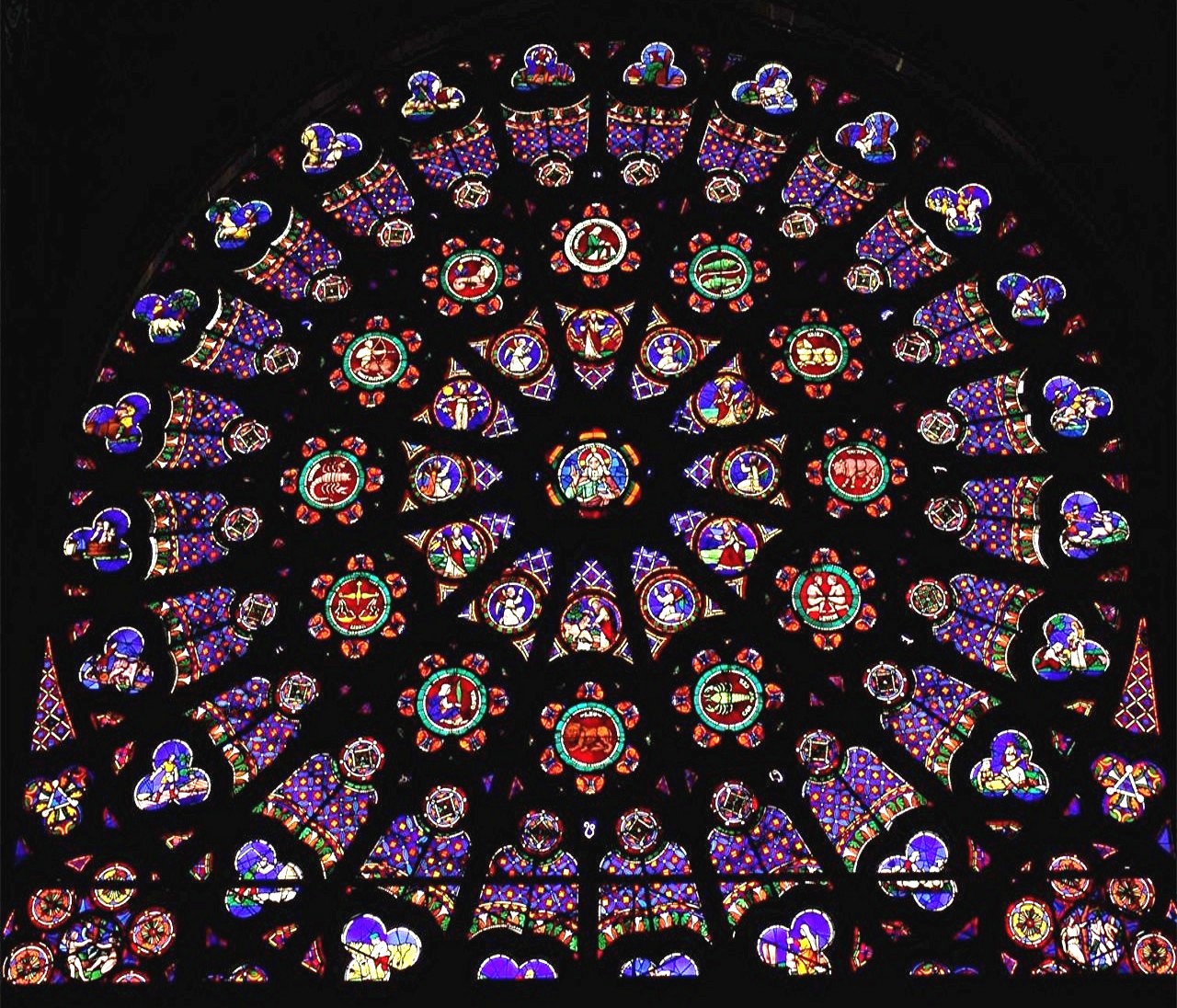
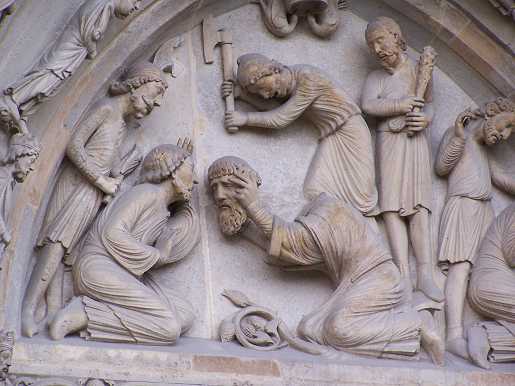


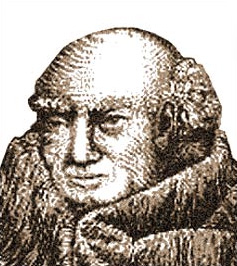

No comments:
Post a Comment